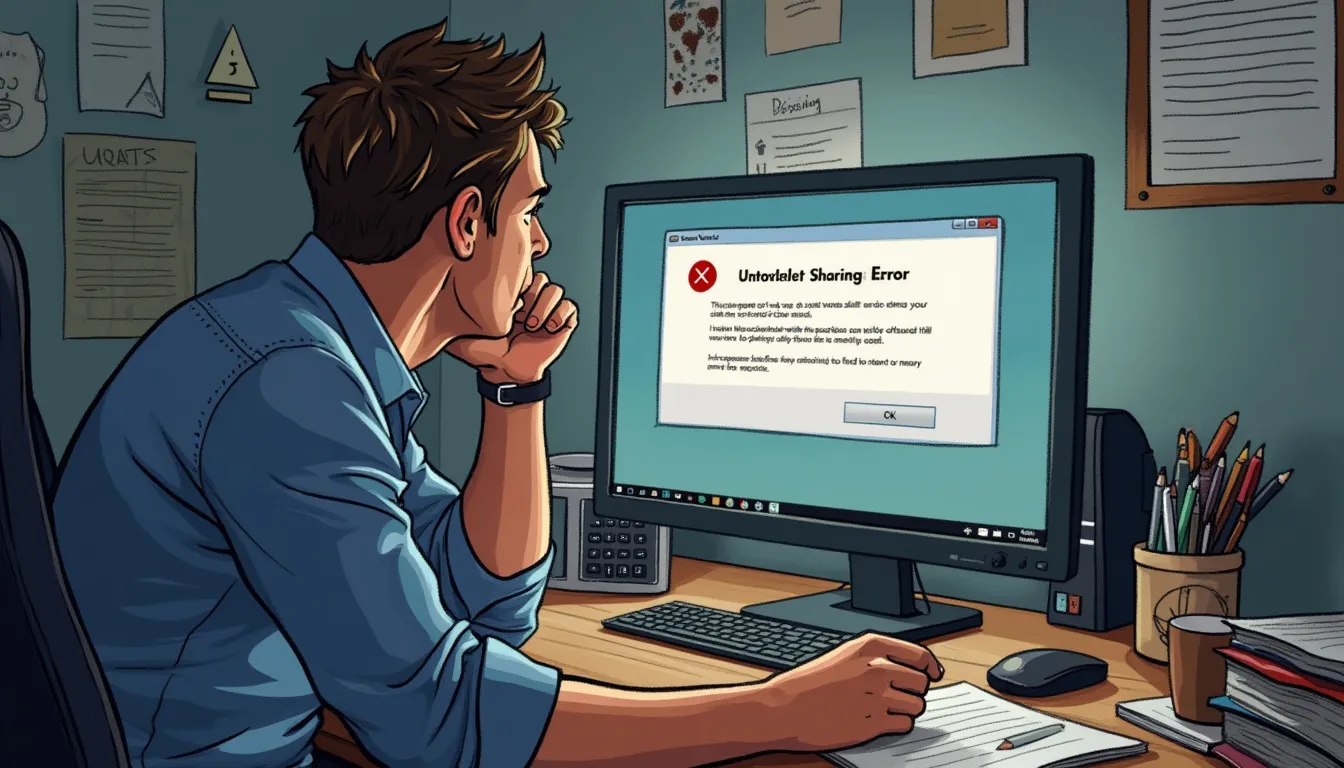In today’s fast-paced digital world, effective communication is key, and sharing documents in Microsoft Word has become an essential skill for collaboration. Whether you’re working with a team across the globe or simply sending a report to a colleague in the next office, knowing how to efficiently share documents can streamline your workflow and enhance productivity. Microsoft Word is not just a powerful word processor; it’s a versatile tool that offers a plethora of features designed to take the hassle out of document sharing.
In this article, we’ll explore some of the most effective tips for sharing documents in Microsoft Word, ensuring that your files not only reach the right people but are also presented clearly and professionally. So, get ready to unlock the potential of collaborative work and find out how you can make sharing documents easier and more efficient than ever before!
Introduction to Sharing Documents in Microsoft Word
Sharing documents in Microsoft Word has never been more important, especially in our increasingly collaborative work environments. Whether you are working on a team project or need feedback from clients, understanding how to effectively share documents can save you time and foster better communication.
Microsoft Word is a versatile tool that simplifies the document-sharing process, allowing users to collaborate seamlessly. Below, we delve into the essentials of sharing documents in Microsoft Word, providing you with effective tips to enhance your document-sharing experience.
1. The Importance of Sharing Documents
- Collaboration: Facilitates teamwork by enabling multiple users to contribute to a single document.
- Feedback: Helps in receiving input and suggestions promptly, improving the final output.
- Remote Work: Supports effective communication and document sharing, making remote work a breeze.
- Version Control: Ensures all collaborators are working on the latest document version to avoid confusion.
- Time Efficiency: Streamlines the process, reducing the time spent on back-and-forth emails.
2. Microsoft Word as a Document Sharing Tool
Microsoft Word is not just limited to writing; it is a powerful tool for sharing documents and enhancing productivity. With its built-in features, Word allows users to share documents efficiently and securely. Here are key points to consider:
| Feature | Description | Benefit |
|---|---|---|
| Share Function | A one-click option to share documents via email or cloud. | Simplifies the sharing process. |
| Comments and Track Changes | Allows collaborators to leave feedback and suggestions. | Facilitates clearer communication and revisions. |
| Cloud Integration | Direct sharing within OneDrive or SharePoint. | Ensures access to documents from anywhere. |
3. Advantages of Streamlined Document Sharing
Sharing documents in Microsoft Word not only enhances collaboration but also allows your team to streamline workflows. Consider the following benefits:
- Increased Productivity: Collaborative features allow for real-time editing, meaning no more waiting on email responses.
- Secure Access: Set permissions to protect sensitive information while still providing access to necessary individuals.
- Consistency: Maintain organization and formatting across various user inputs.
4. Getting Started with Document Sharing
So how do you kick things off? Sharing documents in Microsoft Word is simple. Here’s a step-by-step approach to initiate document sharing:
- Open the Document: Start by opening the document you wish to share.
- Click on Share: Located in the upper right corner, this button is your gateway to sharing.
- Select Sharing Method: Choose to share via email, link, or directly to a server/cloud service.
- Set Permissions: Decide who can edit or view and send the invitation.
5. Recommended External Resources
For a more in-depth understanding of sharing documents in Microsoft Word, consider checking out the following resources:
- Microsoft Support: Share Your Document in Word
- Lifewire: How to Share Documents in Microsoft Word
- How-To Geek: Collaborate on Documents in Microsoft Word
6. Tips for Effective Document Sharing
Here are some handy tips that will help streamline your document-sharing experience:
- Use Cloud Storage: Save your documents in OneDrive for easy access and sharing.
- Regular Updates: Keep documents up-to-date to ensure all collaborators have the latest information.
- Communicate Clearly: Make sure everyone understands how to access and collaborate on the document.
- Check Permissions: Regularly review access permissions to ensure the right people have the right access.
Mastering the art of sharing documents in Microsoft Word can greatly enhance your team’s efficiency and collaboration efforts. Leveraging the features available will allow you to create a more streamlined workflow that benefits all parties involved—happy sharing!

Best Practices for Sharing Documents in Microsoft Word
Utilizing Built-in Sharing Features
When it comes to sharing documents in Microsoft Word, the first thing you should do is take advantage of its built-in sharing features. Here’s how you can ensure a seamless sharing experience:
1. Using the “Share” Function:
– Open your document in Microsoft Word.
– Look for the “Share” button, usually located in the upper right corner.
– Click on it – voila! You’ll be greeted with a pop-up window that allows you to enter email addresses or generate a link.
2. Sharing via Email or Cloud Services:
– Choose to send an email directly from Word, allowing you to add a message.
– Alternatively, select cloud storage options like OneDrive, SharePoint, or Dropbox for easy access.
Remember, using these functionalities not only saves time but also streamlines the process of sharing documents in Microsoft Word among your team.
Setting Permissions and Collaboration Options
Security and collaboration go hand-in-hand when sharing documents. Make sure to set the right permissions:
– Managing Permissions:
– After clicking “Share,” you can choose who can view or edit the document.
– Select “Anyone with the link” or restrict access to specific people.
– Don’t forget to toggle ‘Allow editing’ off for those who should only view your work.
– Enabling Real-time Collaboration:
– With Microsoft Word’s cloud capabilities, you can work simultaneously with others.
– Use comments and track changes to facilitate feedback and tweaks without hassle.
Remember to encourage your team to utilize these features as effective sharing of documents in Microsoft Word can lead to enhanced productivity.
Formatting Considerations for Shared Documents
Let’s face it – nobody wants to sift through a messy document. Formatting is key! Here are some smart tips:
– Importance of Formatting:
– Consistent formatting makes your document easier to read and understand.
– Use standard font sizes, like 11 or 12 points, and avoid too many colors or styles.
– Using Styles and Headings:
– Leverage the “Styles” feature to apply uniform headings.
– This helps in creating a Table of Contents, making navigation a breeze for your readers.
– Creating Tables of Contents:
– Insert a Table of Contents for longer documents, allowing readers to jump to sections that interest them.
– Go to References > Table of Contents, and let Word do the work for you.
Here’s a quick table summarizing the important formatting practices:
| Formatting Practice | Benefit |
|---|---|
| Use Consistent Fonts | Enhances readability |
| Apply Styles | Create organized sections |
| Include a Table of Contents | Facilitates navigation |
| Use Bulleting and Numbering | Clarifies information |
Remember, sharing documents in Microsoft Word is not just about getting it out there; it’s also about how your work looks!
Additional Tips for Seamlessly Sharing Documents
– Consider a Version History:
– Microsoft Word keeps track of document versions. If something goes wrong, simply access the version history under the “File” tab and restore previous edits.
– Ditch the Attachments:
– Instead of emailing cumbersome attachments, share a link to the document. This keeps the content dynamic and reduces inbox clutter.
– Test before Sharing:
– Always open the document as a recipient would. Check that permissions are set correctly and that all elements are functional.
To dive deeper into document-sharing practices, you can explore Microsoft’s Official Guide.
By incorporating these best practices, sharing documents in Microsoft Word can become a hassle-free experience, ensuring your collaborative efforts remain on point.

Troubleshooting Common Issues When Sharing Documents in Microsoft Word
Sharing documents in Microsoft Word can sometimes feel like navigating a minefield, especially when compatibility issues and errors pop up out of nowhere. Fear not! Here are some essential tips to help you troubleshoot common issues, ensuring a smooth collaboration experience.
1. Identifying and Resolving Compatibility Issues
When working with Microsoft Word, one of the biggest hurdles can be compatibility across different versions of the application. Here’s how to tackle that:
- Version Check: Always check which version of Microsoft Word your colleagues are using. Newer versions can introduce features not available in older ones, which may render your document incompatible.
- Document Conversion: If you encounter issues, a straightforward solution is to convert your document to a universally recognized format like PDF. To do this:
| Steps to Convert Document |
|---|
| 1. Open your document in Word. |
| 2. Click on ‘File’. |
| 3. Select ‘Save As’ and choose ‘PDF’ as the file type. |
This way, your document’s formatting remains intact, and it can be opened across various platforms. Voila, you’re back on track!
2. Addressing Common Errors and Their Solutions
Even the most experienced Word users encounter hiccups while sharing documents in Microsoft Word. Here are some frequent errors and simple solutions:
- Error: File is Locked
- Solution: This error often occurs when someone else is editing the document. You can either wait for them to finish or create a copy for yourself by clicking on ‘File’ > ‘Save As’ to allow you to edit your version independently.
- Error: Cannot Share Document
- Solution: Ensure you have the appropriate permissions for the document. If it’s stored in OneDrive or SharePoint, check the sharing settings and make sure the document is set to allow editing.
For even more troubleshooting tips, check out Microsoft Support for detailed guidance.
3. Guidance on Restoring Previous Versions
Have you ever wished you could turn back time? Well, when it comes to document errors, you kind of can! If something goes awry with your document, here’s how to restore previous versions:
- Go to ‘File’ and click on ‘Info’.
- Look for the ‘Version History’ option.
- Select a previous version to view or restore.
Restoring an earlier version can save you from hours of work lost due to errors or unwanted changes, making it a vital skill in sharing documents in Microsoft Word.
4. Keep Everything Updated
Lastly, to avoid many issues before they start, keep your software up to date. Regular updates address bugs, enhance compatibility, and introduce new features. It’s like giving your productivity a shot of espresso!
- To check for updates:
- Open Word, go to ‘File’, and click on ‘Account’.
- Select ‘Update Options’ > ‘Update Now’.
With updates, you’ll minimize problems when sharing documents in Microsoft Word and can keep right on writing that best-selling novel!
In summary, whether you’re dodging compatibility landmines or fixing access errors, knowing how to troubleshoot effectively is key to successful document sharing. Armed with these tips, you’ll tackle any sharing obstacles like a pro!
Conclusion
Mastering the art of sharing documents in Microsoft Word is a game-changer for enhancing collaboration and productivity. By leveraging the built-in sharing features and understanding how to manage permissions, you can ensure that your documents are not only secure but also accessible to your collaborators. With formatting best practices in mind, you can create documents that are easy to read and navigate—setting the stage for effective communication.
Moreover, being equipped to troubleshoot common issues such as compatibility and sharing errors will save you time and frustration, allowing you to focus on what truly matters: your content. So, whether you’re working in a team or crafting a shared proposal, integrating these effective tips into your routine will undoubtedly lead to smoother and more efficient document sharing. Embrace the power of sharing documents in Microsoft Word, and watch your collaborative efforts soar!
1 thought on “Effective Tips for Sharing Documents in Microsoft Word”
Comments are closed.


Pingback: Microsoft Word AI Writing Assistant: How Copilot Transforms Your Writing in 2025 | MSW Tutor.